Decorative fence: beautiful landscape design ideas
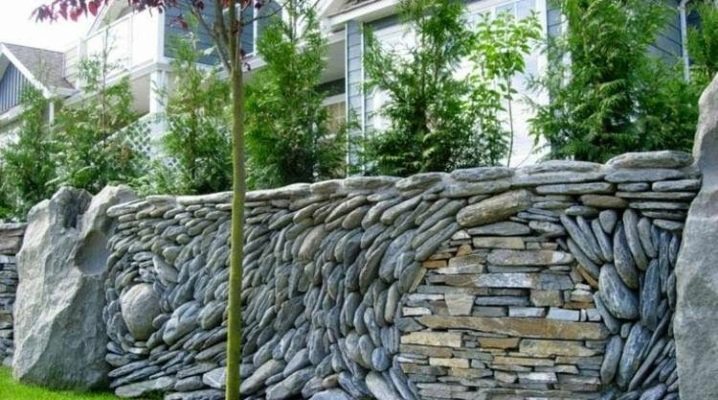
The fence on the site serves to fence certain zones and territories, in order to avoid intrusions into the site by unwanted guests, to protect green spaces from damage by animals, to delimit the functional areas of the backyard, designate the contour of the flower bed and ease the care of plants.
This is a necessary element of organizing the space of the site, so its appearance must meet certain requirements. In modern households, the functional purpose is combined with the decorative function of the fence, which has become an integral part of landscape design. What features of a decorative fence will help to combine both unitary and aesthetic functions, we will consider in more detail in this article.
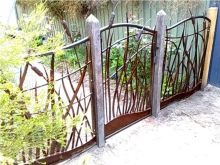
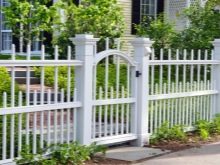

Peculiarities
Traditionally, the fence is used to enclose the territory of land ownership and is located along the entire contour. External fencing is of two types: protective, it is made solid, impenetrable to the eyes, or lightweight, more transparent, - such a fence is intended only to mark the boundaries of the site.
In the first case, the fence is made of brick, stone, concrete, profiled sheet or picket fence with a height of two meters and above. This fence is made without intermediate transparent inserts, it completely isolates the territory.
Designers, with the help of decorative finishes, give such monolithic fences a decorative effect, and often achieve smoothing and lightening of the massive structure through the selection of material, special lighting and landscaping.
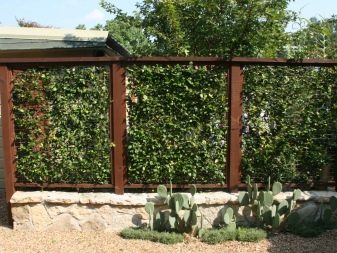

In modern cottage settlements with security, there is no need to make a massive solid fence, so beautifully decorated homestead territories are fenced off with metal sections. The first place among the most exquisite designs is occupied by forged spans with stone posts.
This is the most expensive type of fencing. To reduce the cost, small inserts of forged elements are used in an ordinary metal fence on concrete or steel supports.
The height of such fences can vary from very small to 3-4 meters. Metal fences provide a reliable level of security, allowing others to admire the beauty of the landscape and flowering plants.
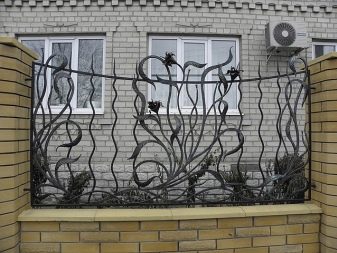
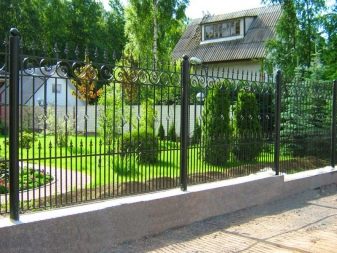
These types of fences belong to capital structures, they serve for more than one decade, they are the guarantor of safety and do not lose their aesthetic qualities for the entire service life, however, they require the installation of a full-fledged pile or strip foundation, excavation for the installation of a trench under the foundation, and the construction of support pillars.
The function of marking the boundary of the land plot can be realized in lighter and more airy structures. Universal fences made of wooden elements, plastic or lightweight metal structures are usually not very high - from 1 to 1.5 meters. Their structure has transparent inserts and does not interfere with good neighborly relations. Such fences do not require a reinforced foundation, piles are reinforced with fine gravel and poured with cement directly into the well without formwork. Lightweight decorative structures add airiness to the fence and harmoniously fit into the natural landscape.
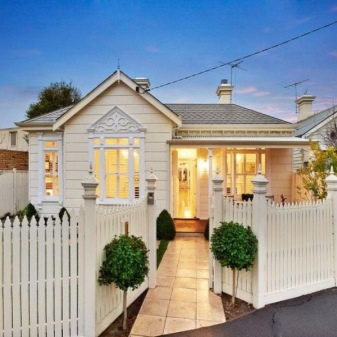

The service life of such fences is quite long, but from time to time they require renewal of the external paintwork or replacement of some parts... The safety function in this case is secondary, protection is carried out only against the invasion of animals or poultry.
Separators of functional zones are a separate type of decorative fences. These are very light decorative structures that are dug directly into the ground, pretreated against corrosion. Fence sections may not be fixed in the ground at all, but have special stands. They have a low height - from 0.5 to 1 meter. Their design is decorative and forms a single ensemble with the adjacent landscape area. The most common use of these fences is in the front garden.
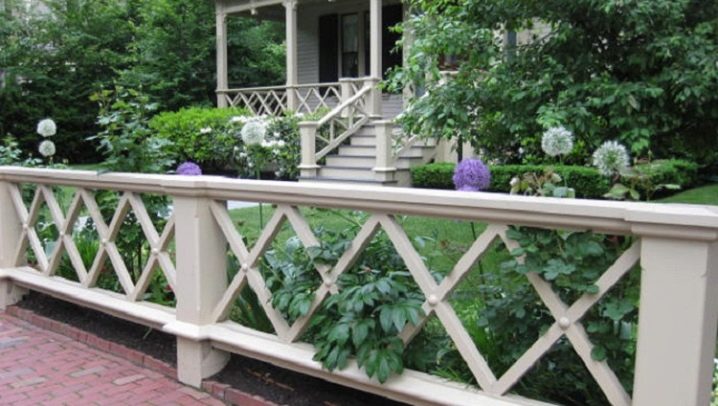
The requirements for these fences are limited by the decorative effect of isolating one zone from another within the site. When you change the decor of the flower garden or the location of the pool on the site, these fences are replaced with others or moved to another place.
The last functional area of the fence for the flower garden is up to half a meter high. These curbs have a huge variety of materials of manufacture, unlimited possibilities for design solutions, available for self-production. They differ in service life from decades (natural stone and metal curbs) to one season (willow vine wicker).
To create a harmonious landscape on a personal plot, it is necessary to choose the type of fence, its shape and material of manufacture in the style of the general design of buildings and finishing of paths.
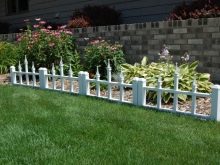


Materials (edit)
Not all materials can be used in the manufacture of various types of fences. For a capital fence around the cottage, choose a brick, clinker, finishing or decorative stone. These fences look very solid. True, with sufficient length, they create a monotonous and a little boring wall.
In such cases, a good solution is combination of materials and fence heights. The arch-shaped structure of the span with an insert made of artistic forging breaks the row and gives variety to the fence.
The harmonious combination of stone, picket fence, broken line of the base of the fence and the pattern of the landscape of the area can be a godsend for the owners of the estate.

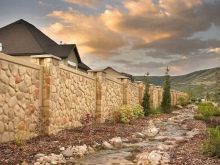
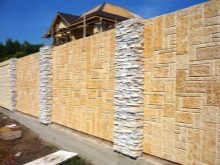
Designers suggest the use of a round stone for finishing an array of spans. These finishes can be matched to the desired color and create a stylish enclosure. Artistic decoration of monochromatic stone or brickwork in the form of a certain pattern or ornament gives the fence an artistic value.
Decorative concrete remains a popular material for making a fence. Manufacturers offer concrete structures of various patterns and colors, they are completed with pillars, have four sections of panels and special fixtures for fastening parts, are quite easy to install, are strong, durable and beautiful fencing.
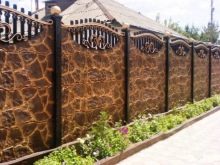
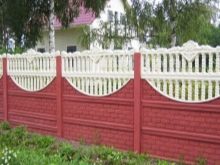
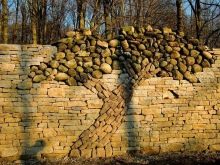
Another traditional material for decorating fences is wood. it durable eco-friendly material, which is interesting for its beautiful fibrous structure, fits perfectly into a rural landscape. Today, designers have found many artistic solutions for fences made of mansel - various forms of wooden picket fence. Such a fence looks stylish and modern.
The location and size of the pickets can be the most bizarre.
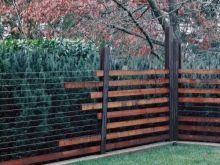
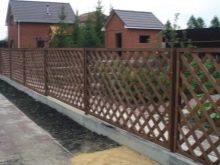

For the manufacture of a wooden fence, coniferous, deciduous or exotic woods are used. Their use is limited only by the estimated cost of the fence. A picket fence made of pine or birch has a democratic price. Pine, due to its high resin content, is highly resistant to decay. Oak or larch fences acquire increased strength over the years, these materials are the most durable. Fences made of logs in the national Russian style are reliable and have good performance.
Bamboo looks very elegant.It creates a special tropical atmosphere, especially with additional design tricks such as lighting. Unusually popular are fences made of laths in the form of a lattice. These fences work well with English style front gardens.
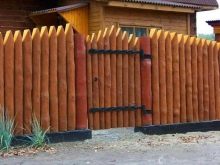
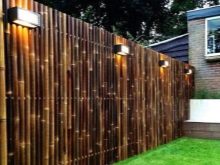
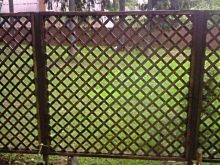
A favorite material for a homemade lightweight garden fence is vine. Craftsmen are happy to make wattle fence. Their production is not difficult. Thick branches are simply dug into the ground at an equal distance from each other and fill the space between them with long, flexible branches. In the middle lane, the most common material for making wattle fence is willow.
All wooden parts are treated with special compounds to protect against adverse weather conditions and increase service life.
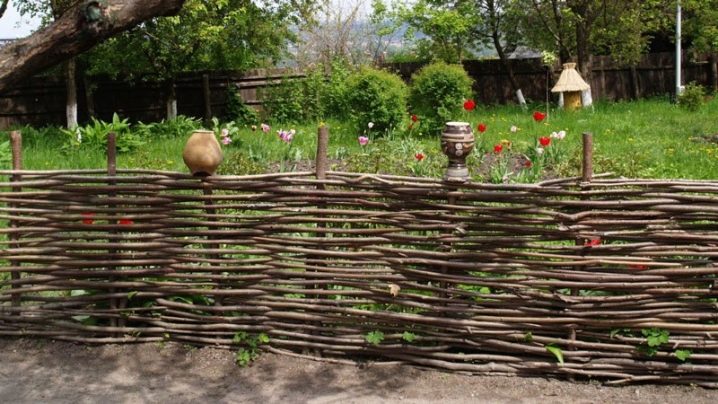
Simple metal fences, lattices and nets are transformed into a decorative structure using inserts made of stone, forging, wood, lighting elements and decoration with plants.
The heights of fences can vary from flower bed fences to high, solid fences. Metal fences are easy enough to mount, as they consist of modules that are hung on supports. Modern metal sections serve and to protect the territory and create a special stylish look. Transparency and openwork pattern add visual lightness to the structure, while maintaining strength and inaccessibility.
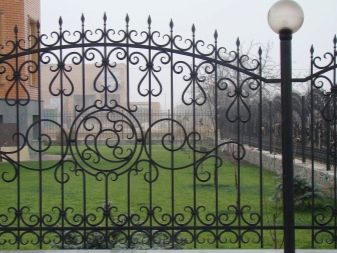

Plastic is used for small fences of flower beds or trees, serves to protect against trampling and encroachments of domestic and wild animals. The height of such fences does not exceed a meter, its strength is low, since plastic is destroyed under the influence of ultraviolet radiation and negative temperatures. The service life of plastic fences can be extended if the fence is dismantled for the winter. Positive characteristics include ease of installation - even an elderly person can cope with this, the ability to move to another place when changing the exposure of the flower beds and a bright palette of shapes and colors.
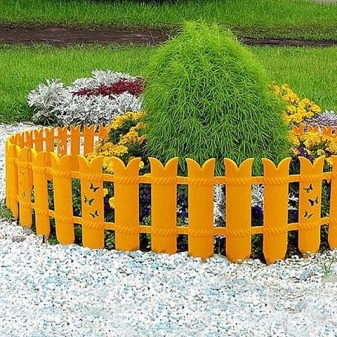
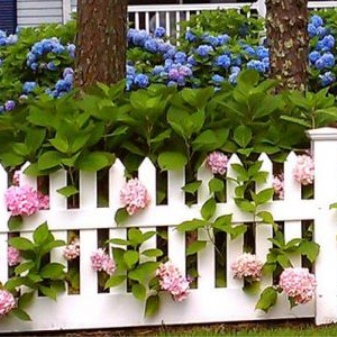
Today, manufacturers offer a wide range of metal-plastic fence elements that do not lose their decorative qualities. These designs differ increased service life and do not fade in the sun. They can be used as multifunctional fences.
Not all landowners like open fences or there is a need for protection from northern winds, but they do not want to burden the structure with a stone or solid picket fence. In this case, an affordable and inexpensive insulation material is polycarbonate. A polycarbonate sheet is fixed to a metal frame, and this section is hung on a pillar-support.
Polycarbonate is available in a variety of colors, among which you can choose a tone that matches the design of the house.
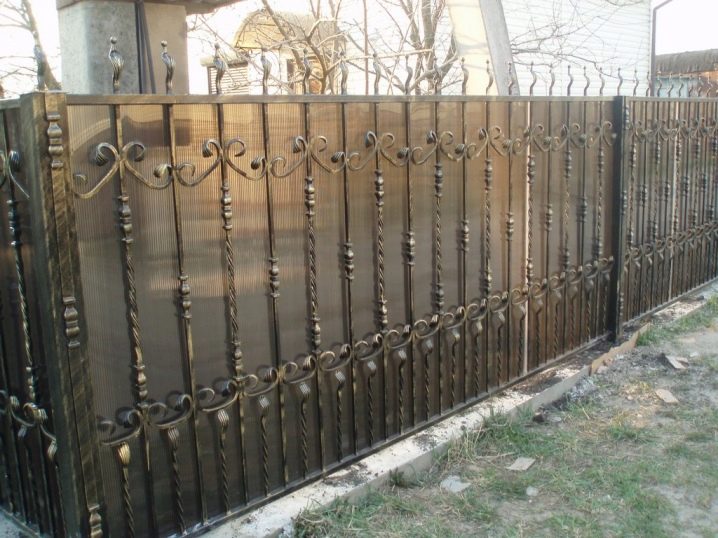
Glass fences are more expensive and more fragile than polycarbonate. But for decorative purposes and to ensure the required level of lighting, they are also used in personal plots. The instability to external mechanical influences is compensated by the stylish conciseness of the material and durability. Glass allows you to include the external environment in the landscape of the local area and protect the internal microclimate.
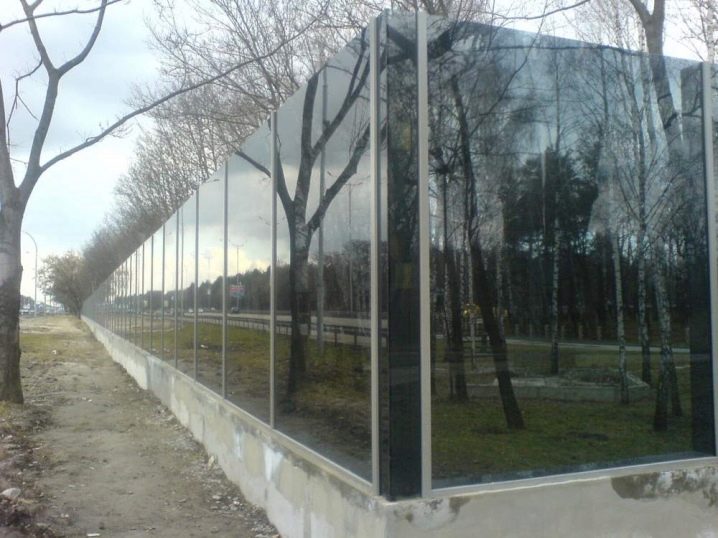
Decor
The most popular use of decorative fences is site zoning. Fences can be used to hide a garden area, fence off a playground, or create privacy for a patio area.
The children's corner is traditionally fenced off with a plastic fence. When the children grow up, you can remove it and expand the territory of the yard or plantings. The patio is designed for leisurely conversations, where you can sit quietly with a cup of coffee or a glass of wine. A stylish decorative fence will help you privacy.
In the next season, you can save this area, or maybe another, no less beautiful corner or tree will appear where you want to move a decorative fence.
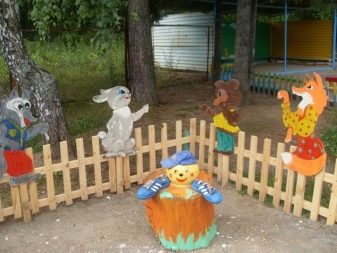
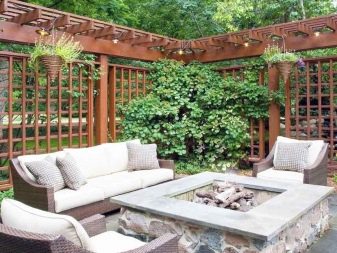
Glass fences are traditionally used for fencing swimming pools and solariums. Pools are fenced off so that children can only swim under the supervision of older relatives. In sunny weather, you can sunbathe without fear of cold northern winds and enjoy the surrounding landscape.
The use of gabions for zoning territories has become a fashionable trend in landscape design. Gabion is a metal mesh filled with stones. These fences are very durable and have the function of maintaining the slope of the site. Gabions are indispensable for terracing a site; with their help, the relief is beautifully leveled.
Different types of wattle fence are indispensable for the garden area. Decorated with items of peasant life, they become a decoration of the personal plot.
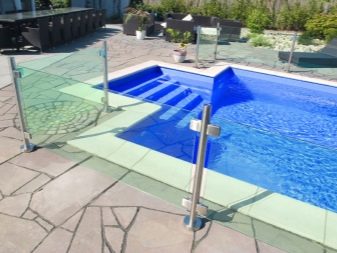
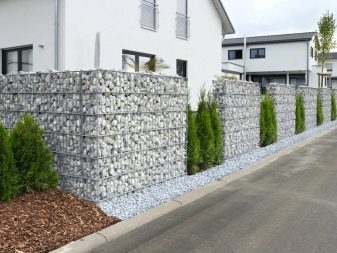
Professional advice
To create a beautiful decorative fence, do not forget about the plant decor. Even the most inconspicuous and monotonous fence will sparkle with bright colors if blooming clematis vines are planted nearby.
The frost-resistant, profusely blooming Flamentanz rose will become a living decorative element.
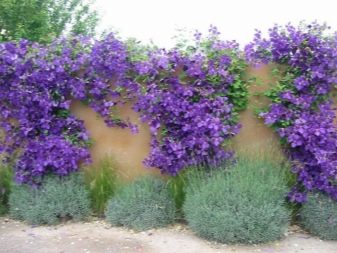
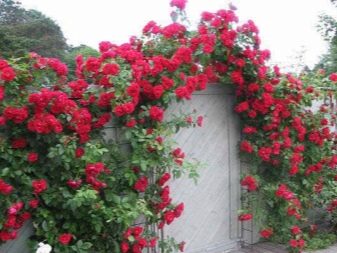
Illumination plays a huge role in the perception of a landscape surrounded by a fence. It removes monotony and adds airiness to the fence. It is worth the effort for the amazing effect of adding light.
A popular material is professional sheet. For all its practicality, aesthetic qualities leave much to be desired.
When using a profiled sheet, an additional decor is a prerequisite, either using a combination with other materials, or an unusual color.
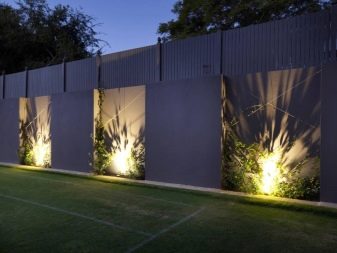
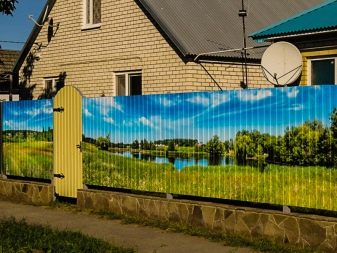
Beautiful examples
Frosted glass combined with wooden spans in a minimalist style.
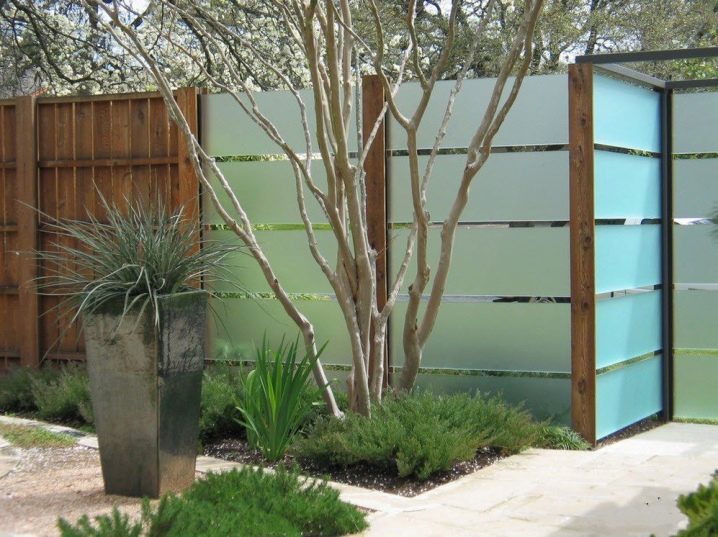
The sliding fence is of interest. Its location can be easily changed depending on the needs. A metallic floral ornament in a wooden frame adorns the coastline.
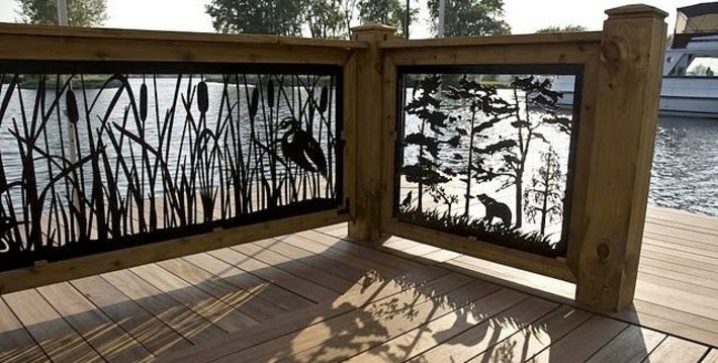
A fence made of type-setting bright modules adds an oriental flavor to the area.
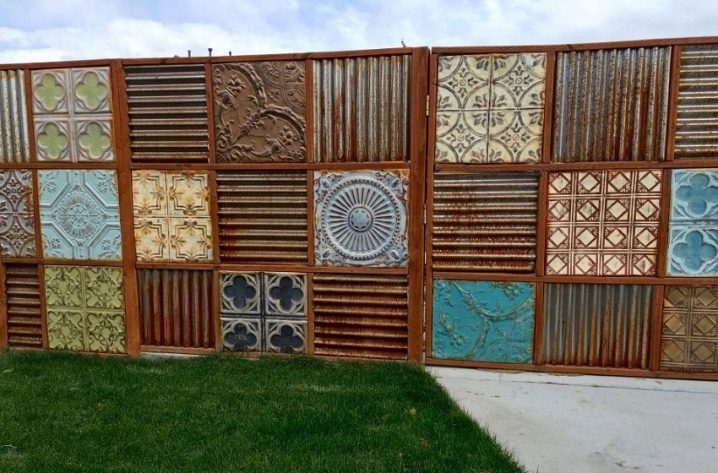
The Art Nouveau style has won not only the interior, but also the exterior.
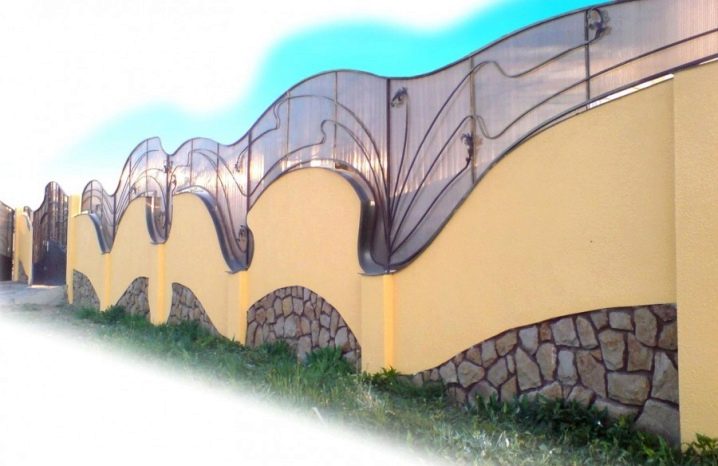
For information on how to make a light and beautiful decorative fence, see the next video.



































































The comment was sent successfully.